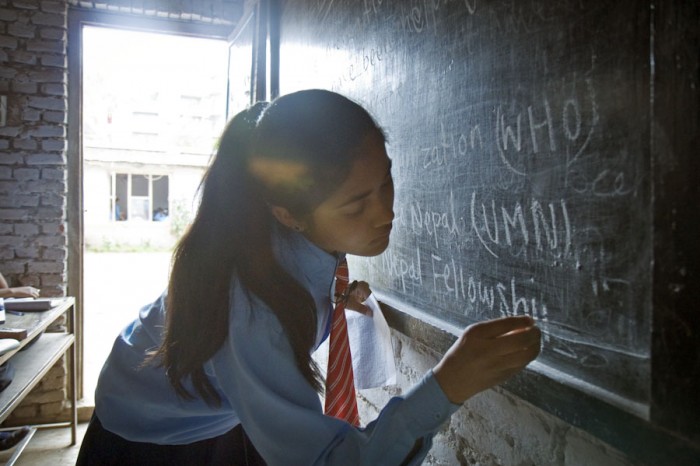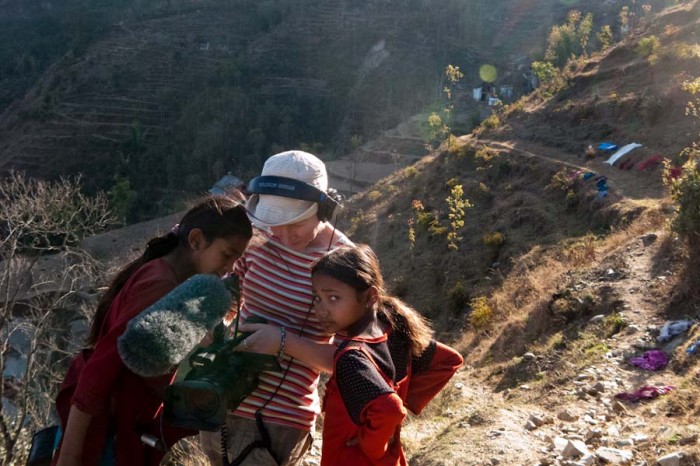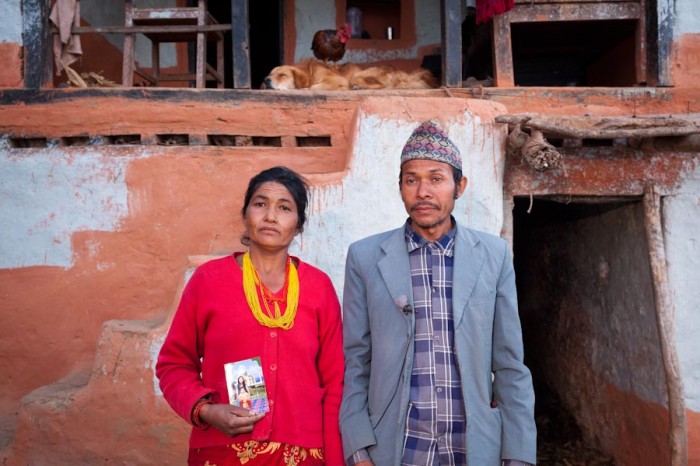
Amy Benson was looking for a success story when she headed to Nepal in the summer of 2008. A story she was sure she’d found when she met Shanta Darnal — a 15-year-old girl with dreams of becoming a doctor.
Darnal — who came from a poor, rural family and was attending school in Katmandu thanks to Western donations — was bright, determined and beautiful, a poster child for a growing movement promoting girls’ education as a panacea for global development.
“I really did believe that Shanta had the power to change her country, she had that kind of personality,” says Benson, looking out the window of her cramped editing studio in Seattle’s Chinatown International District. “I felt this is someone who could change the world.”
Benson had been hired by a Los Angeles nonprofit to tell the story of Nepalese girls attending school, thanks to the nonprofit’s efforts. As a former teacher at an all-girls school and a filmmaker, Benson was excited to show the world the power of educating girls.
Benson was so moved by Darnal that, in addition to shooting the promotional film she’d been hired to do, she decided to document Darnal’s journey toward becoming a doctor in a feature-length film Benson planned to shoot over multiple years.
“Of course she was going to make it,” remembers Benson six years later. “It never occurred to me that she wouldn’t make it.”

But Benson was wrong. In the summer of 2010, she received a phone call that Darnal had committed suicide at her brother’s home in Katmandu. She was 17.
Suicide is the leading cause of death among girls and women in Nepal, and the numbers are rising. The reasons are complex and hard to confirm.
Experts and studies suggest that a combination of poverty, a lack of opportunity, gender-based violence, mental illness and scarce mental-health resources in Nepal may all be contributing factors.
But Benson couldn’t help but wonder if the experience Darnal had attending school in Katmandu may also have played a role. Darnal was living with an adult brother in the city, but the rest of her community was a 12- to 16-hour drive (plus hike) away.
What’s more, Darnal’s family, none of whom had gone to school, had no frame of reference for her new life.
Darnal, who was placed in an elite school because of her exceptional intelligence, may have felt isolated among more privileged students.
And then there was the pressure. There was pressure to succeed, to lift her family out of poverty, to serve her village, to justify what Benson calls “winning the globalization lottery” and having the opportunity to go to school.

Dr. Gregory Simon, a psychiatrist and researcher at Group Health Cooperative who studies depression and suicide in poor and middle-income countries, warns it’s dangerous to speculate about why an individual decides to take her own life — especially when we’re talking about different cultures and contexts.
“We can talk about stresses and risk levels at the macro level, but how that applies to an individual? You have to be really careful,” says Simon. “What the risk factors are going to be for any individual are going to be individual.”
Since Darnal’s death, Benson has been working on “The Girl Who Knew Too Much,” a documentary about Darnal scheduled for the film-festival circuit in early 2015.
Benson is careful to say she is a huge proponent of girls’ education and hopes this film encourages conversations about how to take mental health, cultural context and community involvement into consideration when working in that field.
“The NGO that was involved in Shanta’s life, it definitely wasn’t their fault that Shanta died,” says Benson. “But they were part of the mix.”
When asked why she didn’t decide to make a different film about a girl who does succeed through education, Benson responds quickly.
“There are many other girls that are making it,” she says. “But I knew this one. This is the one I met.”
Now, thanks to her documentary, we can meet her, too.

